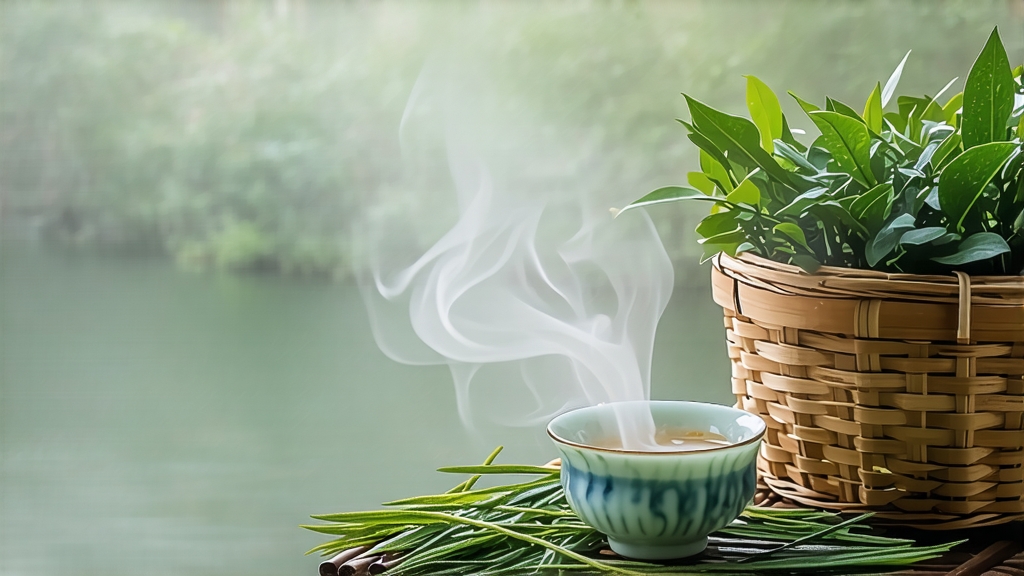
Longjing, literally “Dragon-Well,” is more than a green tea; it is a liquid manuscript of Chinese aesthetics, geography, and patience. Nestled among the limestone ridges that ring Hangzhou’s West Lake, the tiny 2,200-hectare core zone sanctioned for authentic West Lake Longjing has, for twelve centuries, supplied emperors, poets, and now global tea lovers with a taste that Chinese call “the flavor of early spring mist.” To understand Longjing is to follow three intertwined narratives: the dynastic history that elevated it to tribute status, the microclimate that edits its chemistry every morning, and the hand of the tea master who tames 200 °C heat within seconds to lock that fleeting spring inside a leaf.
Historical scrolls first mention “Longjing” in the Song Dynasty (960-1279), yet its apotheosis arrived during the Qing. Legend claims the Qianlong Emperor, while visiting the Hugong Temple south of West Lake, plucked a handful of leaves from the 18 ancient bushes still growing today. He tucked them into his sleeve, returned to Beijing, and declared the tea an annual tribute. Whether myth or marketing, the story cemented Longjing’s reputation; by the late 1800s, Shanghai export houses were already forging seals that read “Imperial Dragon-Well” to satisfy British and American demand. What those early drinkers tasted was probably darker and roastier than today’s style, because the current jade-green, chestnut-sweet profile only stabilized after the 1950s, when state tea institutes standardized the pan-firing technique.
Geography is the first, silent ingredient. The lake acts as a thermal regulator, storing daytime heat and releasing it at night, so April temperatures fluctuate only 6–8 °C. The surrounding peaks trap humid clouds that filter sunlight into a soft, diffused glow, slowing photosynthesis and boosting amino acids—especially L-theanine, responsible for Longjing’s famous “umami broth” sensation. Soil is a sandy loam derived from weathered limestone, slightly alkaline, draining quickly so that roots stress-quest for micronutrients. Within the core zone, three micro-terroirs are recognized: Shífēng (Lion Peak), Méijiāwǔ, and Wēngjiāshān. Shífēng yields the most sought-after leaves: tiny, sword-shaped, and so tender that experienced pickers can gather only 400 g per day.
The cultivar matrix further complicates identity. While the original population is seed-propagated and therefore genetically diverse, clonal selections have been released since the 1980s. Longjing #43, a cultivar bred for early budding and high anthoxanthin content, now accounts for 60 % of plantings. It produces a brighter green infusion but slightly less complexity than the old-group “Quntízhǒng.” Purists insist that only the latter deserves the name “pre-Qingming Longjing,” referring to leaves picked before the solar term Qingming (around April 5), when chill nights still suppress leaf fiber, yielding a downy bud weighing merely 0.06 g.
Processing begins the moment a two-leaf-and-bud set is snapped from the bush. Pickers wear bamboo baskets lined with nettle cloth to prevent bruising; any crushed edge will oxidize into a red rim that downgrades the batch. Within four hours, the leaves arrive at the village workshop, where they are spread 2 cm thick on woven rattan trays to wither for 6–8 hours. Moisture drops from 76 % to 68 %, softening cell walls for the critical next step: pan-firing (qīng-guō, “killing the green”). Ten kilograms of fresh leaf will finish as 2.5 kg of dry tea, but first they must survive 250 °C.
The master’s bare hand is the thermometer. He swipes the wok with a tuft of fresh tea oil, then scoops 150 g of leaves. For three minutes, his palm flips, presses, and shakes the mass in a rhythm that resembles tai-chi: “collect, press, fling, loosen.” The gesture is both destructive and creative: polyphenol oxidase must be denatured, yet the leaf must remain intact. When the temperature drops to 80 °C, the rhythm slows to a gentle stroking that shapes the famous “flat, smooth, straight” sword form. Ten minutes later, the leaves are winnowed onto a bamboo sieve, cooled for 30 minutes, then returned to a